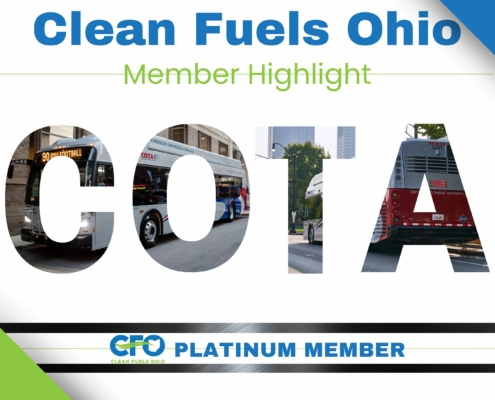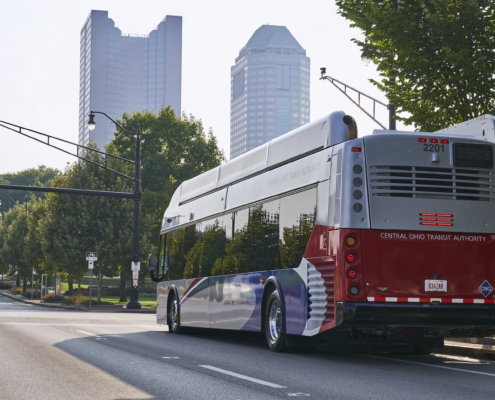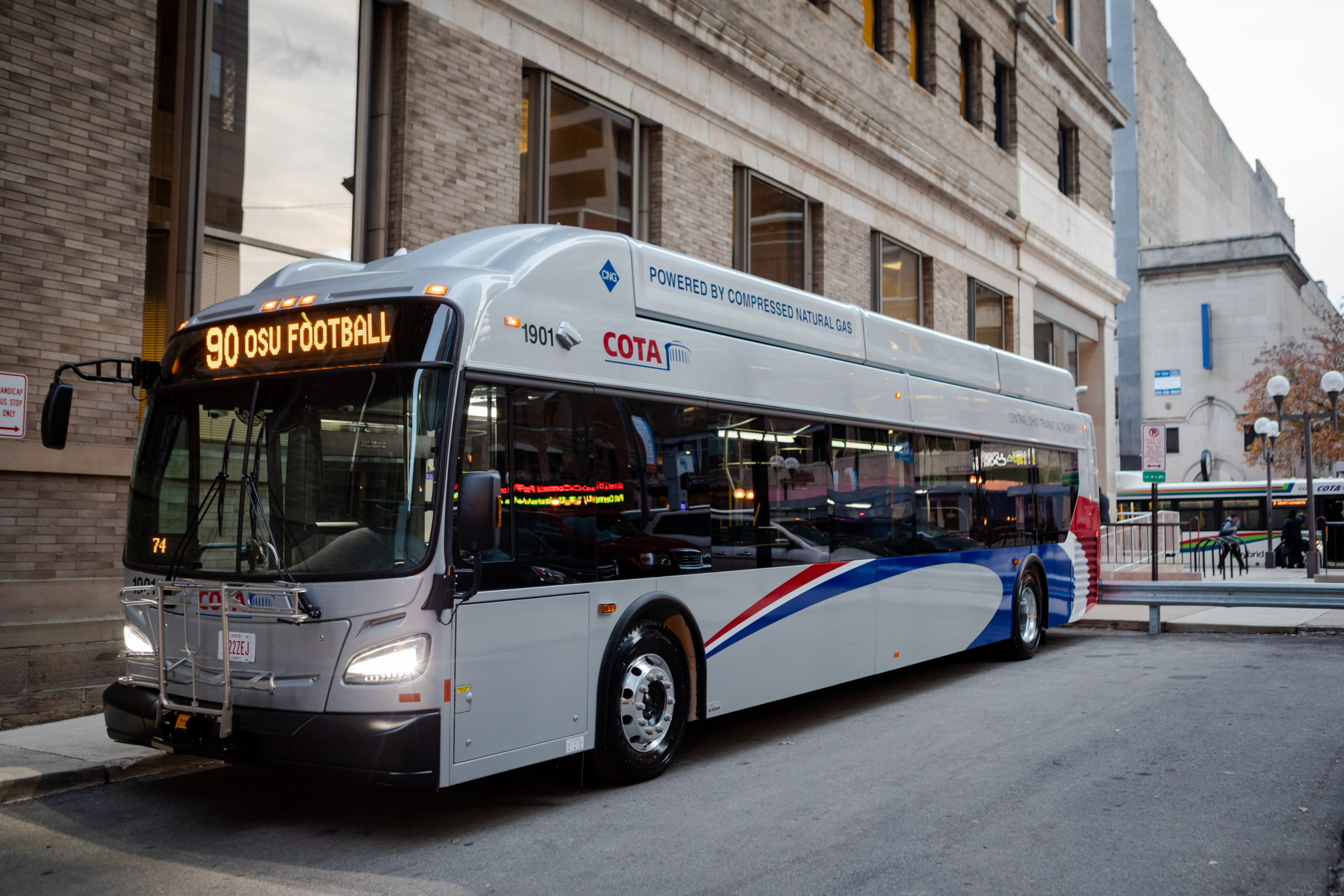Member Highlight: The Central Ohio Transit Authority (COTA)
The Central Ohio Transit Authority (COTA) serves as the transit agency for Franklin County, Ohio. Since its start in 1972, COTA has evolved into a leading innovator in public transit, with its vision as its focus “to move every life forward.” The transit agency goes beyond fixed route service by providing a free downtown circulator, a bus rapid transit lite service on a Central Ohio Corridor, a direct airport line, and micro-transit in select communities to provide more efficient connections to the fixed route service outside its service area.
In addition to providing efficient and dynamic transit service, COTA has set ambitious sustainability goals. The transit agency aims to operate a fully no- or low-emission fleet by 2025 and net-zero carbon emissions by 2045. COTA is also part of the city-wide commitment to low and no emissions as part of the City of Columbus’ Climate Action Plan and believes that delivering environmentally friendly, sustainable, and affordable transportation solutions is the best way to serve all Central Ohio customers and residents.
COTA outlined its first clean-fuel initiative in 2013 and updated that plan to include electric vehicles in 2021 by purchasing its first two electric coaches. These initial additions of electric vehicles allow COTA to continually study the feasibility of electric coaches across its fleet. COTA also ensures it develops the infrastructure to support clean fuel and electric vehicles.
In 2013, COTA began investing in Compressed Natural Gas vehicles. This included building CNG processing stations onsite at its McKinley Avenue and Fields Avenue facilities. COTA has purchased approximately 28 CNG vehicles yearly. By 2025, COTA will retire its last diesel bus.
In 2021, COTA began purchasing electric transit vehicles to add to its fleet. In 2022, COTA committed to only purchase zero-emission buses. Currently, COTA has 10 electric buses with 14 more scheduled for delivery by the end of the year and 26 ordered for delivery in 2024. COTA’s fleet has 251 CNG, 10 electric, and 41 diesel vehicles, with at least 8 of those planned for retirement by the end of 2023.
COTA is very active in obtaining federal grants for its sustainability efforts. In 2022, COTA was awarded $26.7 million in grants from the U.S. Department of Transportation’s Federal Transit Administration (FTA), to purchase 28 battery-electric transit vehicles. Beginning in 2025, COTA plans to buy 28 electric transit vehicles yearly.
COTA is looking at the best ways to integrate electric vehicles into the transit system. COTA’s latest tests show these vehicles get about 150 miles on a single charge. Hence, it is critical to performance to determine the best placement so they are deployed efficiently and can quickly come in and out of service for charging. In 2024, COTA plans to install 6 pantograph chargers at strategic locations on high-traffic transit lines to charge electric buses during their routes.
COTA is also nearing the end of a significant $65 million renovation to the primary transit facility at McKinley Avenue, which includes expanding electric charging capabilities to ease the transition to diesel-free transit vehicles by ensuring the charging infrastructure is in place to meet new electric vehicle demands.
Clean Fuels Ohio is proud to have COTA as a Platinum Level Member of our organization and a leader in sustainable mobility. We recognize that Communities that invest in public transit reduce the nation’s carbon emissions by 63 million metric tons annually, according to the American Public Transit Association. Thank you, COTA, for your leadership in moving more people with clean-powered transit vehicles and your support as a CFO Member!
“Delivering environmentally friendly transportation solutions helps keep our neighborhoods healthy and prosperous. We are now ahead of the curve in reducing greenhouse gas emissions by 9% between 2012 and 2020, while the Central Ohio region saw a 40% increase in transportation-related GHG emissions. That reduction equates to $10M savings for Franklin County largely through improved health outcomes in our own neighborhoods. Though transit isn’t typically a major contributor to greenhouse gas emissions, our ability to provide efficient, equitable transit can be a powerful part of the solution.”








